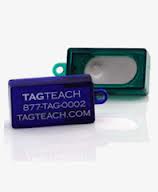 Here’s the answer:
Here’s the answer:
- Student learns at own pace
To review, the three essential conditions are:
- Immediate Feedback
- Student Learns at Own Pace
- Learning Organized in Small Steps
We’ve already discussed the first condition, Immediate Feedback. This post will address the second condition: Student Learns at Own Pace.
Student Learns at Own Pace
Dr. Skinner emphasizes the need for students to learn at their own pace. Learning at her own pace is crucial for a child with autism. Our kids have so many sensory and emotional issues that the teaching process must respect their need for time to respond to, and understand new stimuli.
Since children with autism often have problems with pre-cursor learning skills such as eye contact and imitation skills, it is important to teach these. Yet, eye contact, for example, can be a difficult task for a child with autism for a variety of reasons.
So, how does TAGteach allow the child to learn at her own pace?
By observing the child and waiting for her to act.
In a TAGteach environment, the focus is on observing the child and waiting for her to perform the desired action. In the teaching goal discussed above, the solution is not to force eye contact, but to reinforce it whenever the child performs it. Eye contact, by its very nature, is a fleeting behavior. It is often just a flash and then it disappears.
TAGteach, with the quick “tag,” captures each flicker of eye contact whenever the child chooses to perform it. If the child performs it only once a day or once a week, it will be reinforced at that rate. As the child gains comfort and performs the skill more often, it will be reinforced more often. TAGteach respects the child’s ability to perform this behavior, and allows the child to build it at her own pace.
The TAGteach practice of observing and waiting for the child ensures that the child learns at her own pace, the second of Dr. Skinner’s essential conditions.
What is TAGteach?
TAGteach stands for Teaching with Acoustical Guidance. TAGteach is a teaching and communication method based on the scientific principles of Applied Behavior Analysis (ABA).
TAGteach enables extremely precise positive reinforcement of behavior by using an acoustical signal to “mark” the behavior – at the precise moment the child performs the behavior! The acoustical signal is a short, sharp sound made by a handheld device (the “tagger”). When the child performs the correct action, the parent/instructor immediately presses the button on the tagger and hands over a treat (candy, treat, token, praise, social recognition, or money) as a reinforcer.
With TAGteach, it is easy to reinforce behaviors precisely and quickly. The immediate, accurate feedback and positive reinforcement result in the child performing the correct action more often, and for longer periods of time. With immediate feedback and learning tasks broken down into small steps, children can learn many new skills with TAGteach — at their own pace.
 For more information see the TAGteach website .
For more information see the TAGteach website .
Join the free TAGteach listserve.
TAGteach taggers are available here.
See Martha’s book about TAGteach for Autism or ask a question (with no obligation).
Sign up for my mailing list to receive updates, new articles and free tips right in your inbox!
If you liked this post, please share it on social media via the vertical gray menu on the far right.